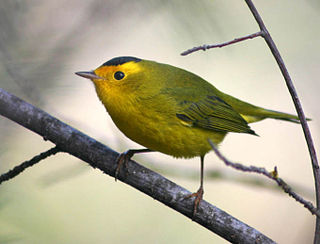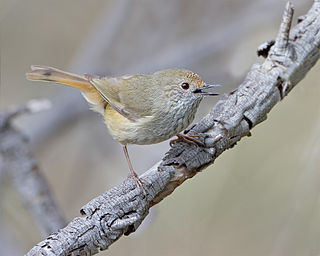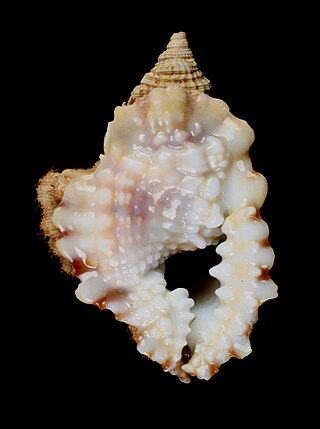
The semipalmated sandpiper is a very small shorebird. The genus name is from Ancient Greek kalidris or skalidris, a term used by Aristotle for some grey-coloured waterside birds. The specific pusilla is Latin for "very small".

Baillon's crake, also known as the marsh crake, is a small waterbird of the family Rallidae.

Wilson's warbler is a small New World warbler. It is greenish above and yellow below, with rounded wings and a long, slim tail. The male has a black crown patch; depending on the subspecies, that mark is reduced or absent in the female. It breeds across Canada and south through the western United States, and winters from Mexico south through much of Central America. It is a very rare vagrant to western Europe.

The field sparrow is a small New World sparrow in the family Passerellidae. It is about 140 mm (6 in) long and weighs about 12.5 g (0.4 oz). The head is grey with a rust-coloured crown, white eye-ring and pink bill. The upper parts are brown streaked with black and buff, the breast is buff, the belly is white and the tail is forked. There are two different colour morphs, one being greyer and the other more rufous.

The Senegal eremomela is a member of the African warbler family, the Cisticolidae. It occurs in the savannas of western Sub-Saharan Africa.

The brown-headed nuthatch is a small songbird endemic to pine forests throughout the Southeastern United States. Genetic analyses indicated low differentiation between northern and southern populations in Florida, but the study also found lower genetic diversity among south Florida populations that may be a result of the increased habitat fragmentation that was documented. The Bahama nuthatch was formerly considered a subspecies (S. p. insularis), has since been reclassified as its own separate species. Two recent studies assessing vocalizations in Bahama and continental nuthatch populations found important differences. One of the studies also demonstrated that continental and Bahama populations did not respond aggressively to calls of the other population. This type of call-response study is often used to help define cryptic species.

The brown thornbill is a passerine bird usually found in eastern and south-eastern Australia, including Tasmania. It can grow up to 10 cm (3.9 in) long, and feeds on insects. It is brown, grey and white. The species has five subspecies.
The least big-eared bat is a bat species of the family Phyllostomidae, found in northwestern Brazil and eastern Colombia. It is the only species within its genus.

The southern little yellow-eared bat is a frugivorous bat species found in Brazil, Argentina and Paraguay.

The steppe pika is a small mammal of the pika family, Ochotonidae. It is found in the steppes of southern Russia and northern Kazakhstan.

Pyramidula pusilla is a species of very small air-breathing land snail, a terrestrial pulmonate gastropod mollusk or micromollusk in the family Pyramidulidae.

Tectonatica pusilla is a species of predatory sea snail, a marine gastropod mollusk in the family Naticidae, the moon snails.

Distorsio is a genus of medium-sized sea snails, marine gastropod mollusks in the family Personidae, the Distortio snails.
Microcladia is a genus of moths in the family Megalopygidae.
Acrolophus pusilla is a moth of the family Acrolophidae. It is found in Colombia.
Alucita pusilla is a moth of the family Alucitidae. It is found in Japan.
Grindelia pusilla, the little gumweed, is a North American species of flowering plants in the family Asteraceae. It is found only in the state of Texas in the south-central United States.

Knoutsodonta pusilla is a species of sea slug, a dorid nudibranch, a shell-less marine gastropod mollusc in the family Onchidorididae.
Microcladia pygmaea is a moth of the family Megalopygidae. It was described by Walter Hopp in 1927.

Kogia pusilla is an extinct species of sperm whale from the Middle Pliocene of Italy, also known as the Littleness Sperm Whale. related to the modern-day dwarf sperm whale and pygmy sperm whale. It is known from a single skull discovered in 1877, and was considered a species of beaked whale until 1997. The skull shares many characteristics with other sperm whales, and is comparable in size to that of the dwarf sperm whale. Like the modern Kogia, it probably hunted squid in the twilight zone, and frequented continental slopes. The environment it inhabited was likely a calm, nearshore area with a combination sandy and hard-rock seafloor. K. pusilla likely died out due to the ice ages at the end of the Pliocene.













